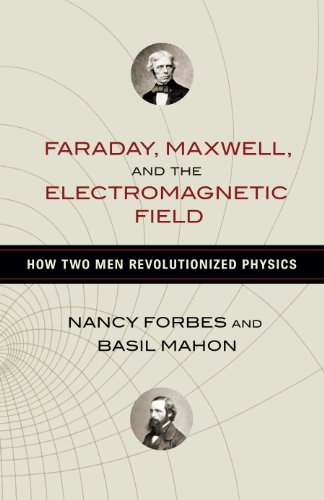Modern physics, a realm fundamentally distinct and captivating, encompasses theories and paradigms that transcend classical notions of time, space, and matter. The burgeoning interest in this field can be attributed to the profound questions it seeks to answer, the elegant yet often paradoxical nature of its theories, and the remarkable technological advancements that have arisen from its principles. For those embarking on a journey into modern physics, the selection of a quintessential introductory textbook is instrumental. This article posits that “Modern Physics” by Kenneth S. Krane serves as an excellent starting point, given its unfurling of complex ideas through a coherent and comfortable narrative, tailored for newcomers to the field.
Modern physics is typically demarcated from classical physics by its departure from Newtonian mechanics and the introduction of revolutionary concepts such as relativity and quantum mechanics. The significance of modern physics cannot be overstated; it has altered our comprehension of the universe, offering insights into the very fabric of reality. The initial allure lies in its exploration of phenomena that defy everyday experiences, endowing inquisitive minds with an innate curiosity.
At the outset, it is crucial to highlight the distinctive aesthetic that modern physics embodies, which captures the imagination and beckons exploration. Take, for instance, the concept of time dilation, as articulated in Einstein’s theory of relativity. Imagine a twin who embarks on a journey through space at near light speed, returning younger than her sibling who remained on Earth. This tangible illustration of time’s malleability beckons enthusiasts to ponder deeper questions: What does it mean to experience time? How do we grasp the continuum of our existence when its very perception can fluctuate?
The profundity of these inquiries is precisely what invigorates one’s pursuit of the subject. However, venturing into the intricacies of modern physics necessitates a solid foundation – a compelling text that serves as both guide and companion. “Modern Physics” by Kenneth S. Krane excelled in this regard; it weaves theoretical concepts with empirical evidence, enhancing the reader’s comprehension through a pragmatic lens.
The book opens with a clear exposition of the historical context, bridging classical physics and modern paradigms. Krane adeptly contextualizes the paradigm shifts that occurred with the advent of quantum mechanics and relativity, illustrating how these revolutionary ideas emerged from profound empirical observations. Each chapter builds upon the previous, expounding upon core principles while incorporating mathematically rigorous yet accessible explanations. This scaffolding technique ensures that learners, irrespective of their prior knowledge, find their footing amidst the complexity.
Further enriching the experience are the numerous illustrative examples and problem sets that accompany each chapter. These exercises not only reinforce understanding but also cultivate a sense of intellectual inquiry, nudging readers to apply concepts practically. Krane’s book fosters an environment where students can grapple with both abstract notions, such as wave-particle duality, and concrete applications, like the photoelectric effect, thereby cementing their grasp of modern physics’ duality.
A crucial feature of “Modern Physics” is its adept integration of contemporary developments within the field. In an age dominated by rapid scientific advancement, understanding the relevance of historical principles amidst ongoing research is vital. Krane’s text judiciously includes discussions on recent discoveries and theoretical advancements, thereby positioning the reader at the cutting edge of knowledge. Topics such as the Higgs boson, quantum entanglement, and the implications of dark matter are woven into the narrative, ensuring learners appreciate the dynamic nature of modern physics.
The narrative voice employed in Krane’s work is particularly noteworthy. It possesses a clarity that resonates, circumventing the potential alienation that often accompanies scientific texts laden with jargon. The author’s meticulous approach invites introspection and cultivates curiosity, a hallmark of effective academic writing. Readers are not merely passive recipients of information; they are encouraged to engage with the material, cultivating a formidable intellectual rigor that will prove invaluable in their studies.
Moreover, the text’s visual aids significantly heighten understanding. Diagrams, graphs, and tables serve as indispensable tools, elucidating complex ideas that might otherwise elude comprehension. In a discipline where visualization plays a critical role—consider the concept of wave functions or spacetime manifolds—well-crafted illustrations are often the linchpin of clarity.
Engagement with Krane’s work has the potential to spark a profound love for physics, a discipline that marries abstract thought with concrete experimentation. Readers can expect to embark on a voyage through topics ranging from nuclear physics to statistical mechanics, all the while grappling with the tantalizing implications that emerge from these explorations. Such an intellectual odyssey equips budding physicists with the tools necessary to navigate the labyrinthine inquiries that define advanced studies in the field.
In conclusion, for those poised to embark on their foray into modern physics, “Modern Physics” by Kenneth S. Krane stands as a paragon of educational literature. Its synthesis of historical context, theoretical exposition, and practical exercises crafts a meticulous guide for those eager to unravel the mysteries of the universe. The book’s ability to blend complex ideas with accessible language serves to inspire future generations of physicists, igniting a passion for discovery and understanding. Indeed, the realm of modern physics, with its inherent complexities and awe-inspiring revelations, beckons readers into a world of endless inquiry and beauty.












